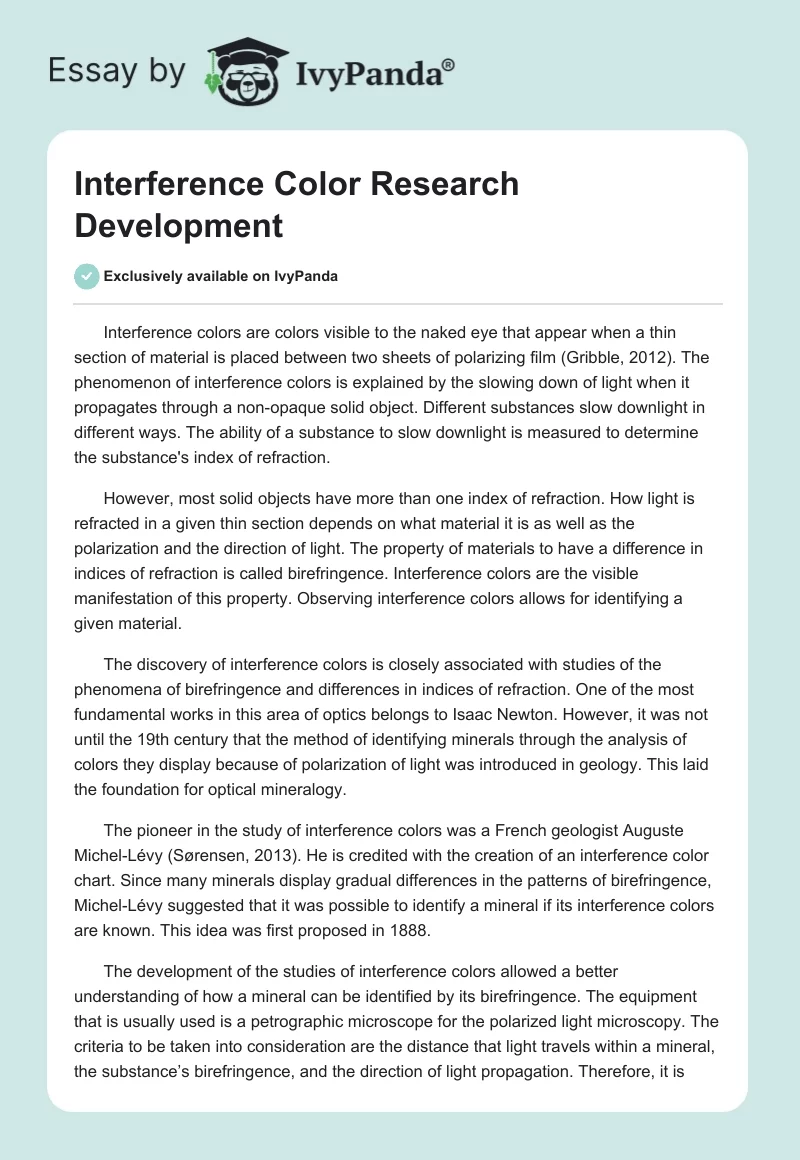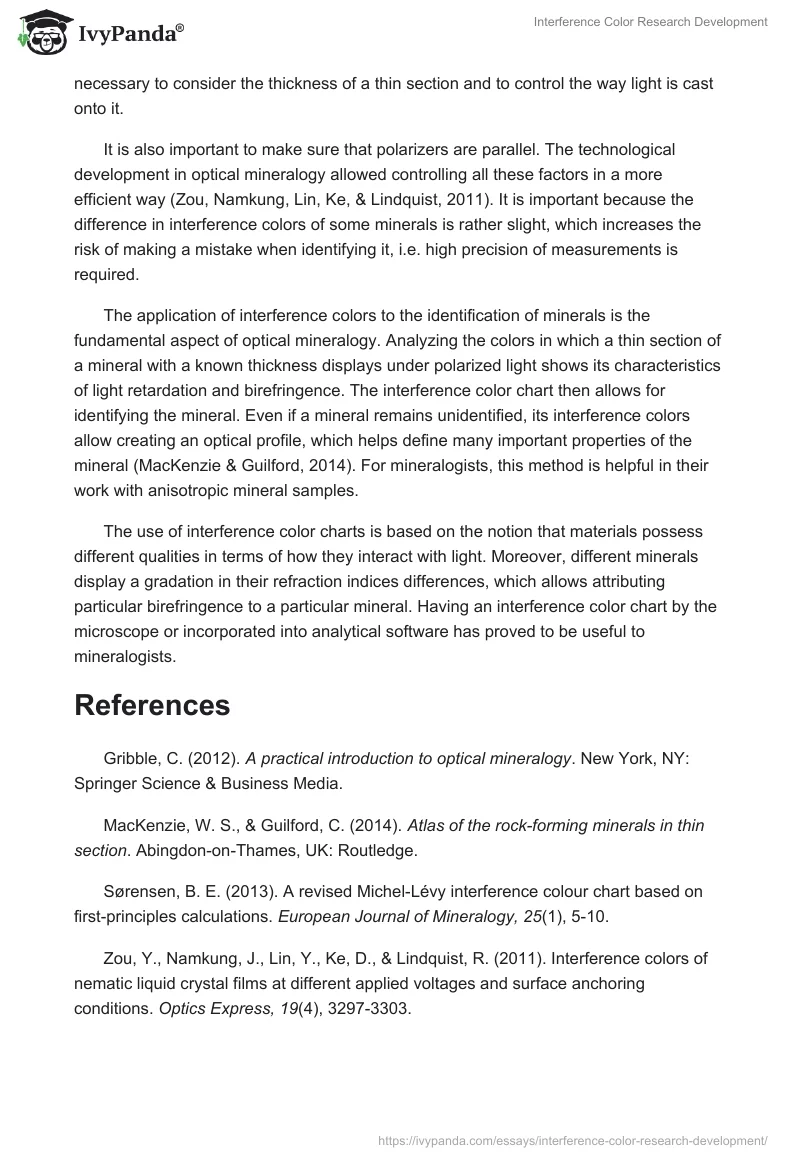Interference colors are colors visible to the naked eye that appear when a thin section of material is placed between two sheets of polarizing film (Gribble, 2012). The phenomenon of interference colors is explained by the slowing down of light when it propagates through a non-opaque solid object. Different substances slow downlight in different ways. The ability of a substance to slow downlight is measured to determine the substance’s index of refraction.
However, most solid objects have more than one index of refraction. How light is refracted in a given thin section depends on what material it is as well as the polarization and the direction of light. The property of materials to have a difference in indices of refraction is called birefringence. Interference colors are the visible manifestation of this property. Observing interference colors allows for identifying a given material.
The discovery of interference colors is closely associated with studies of the phenomena of birefringence and differences in indices of refraction. One of the most fundamental works in this area of optics belongs to Isaac Newton. However, it was not until the 19th century that the method of identifying minerals through the analysis of colors they display because of polarization of light was introduced in geology. This laid the foundation for optical mineralogy.
The pioneer in the study of interference colors was a French geologist Auguste Michel-Lévy (Sørensen, 2013). He is credited with the creation of an interference color chart. Since many minerals display gradual differences in the patterns of birefringence, Michel-Lévy suggested that it was possible to identify a mineral if its interference colors are known. This idea was first proposed in 1888.
The development of the studies of interference colors allowed a better understanding of how a mineral can be identified by its birefringence. The equipment that is usually used is a petrographic microscope for the polarized light microscopy. The criteria to be taken into consideration are the distance that light travels within a mineral, the substance’s birefringence, and the direction of light propagation. Therefore, it is necessary to consider the thickness of a thin section and to control the way light is cast onto it.
It is also important to make sure that polarizers are parallel. The technological development in optical mineralogy allowed controlling all these factors in a more efficient way (Zou, Namkung, Lin, Ke, & Lindquist, 2011). It is important because the difference in interference colors of some minerals is rather slight, which increases the risk of making a mistake when identifying it, i.e. high precision of measurements is required.
The application of interference colors to the identification of minerals is the fundamental aspect of optical mineralogy. Analyzing the colors in which a thin section of a mineral with a known thickness displays under polarized light shows its characteristics of light retardation and birefringence. The interference color chart then allows for identifying the mineral. Even if a mineral remains unidentified, its interference colors allow creating an optical profile, which helps define many important properties of the mineral (MacKenzie & Guilford, 2014). For mineralogists, this method is helpful in their work with anisotropic mineral samples.
The use of interference color charts is based on the notion that materials possess different qualities in terms of how they interact with light. Moreover, different minerals display a gradation in their refraction indices differences, which allows attributing particular birefringence to a particular mineral. Having an interference color chart by the microscope or incorporated into analytical software has proved to be useful to mineralogists.
References
Gribble, C. (2012). A practical introduction to optical mineralogy. New York, NY: Springer Science & Business Media.
MacKenzie, W. S., & Guilford, C. (2014). Atlas of the rock-forming minerals in thin section. Abingdon-on-Thames, UK: Routledge.
Sørensen, B. E. (2013). A revised Michel-Lévy interference colour chart based on first-principles calculations. European Journal of Mineralogy, 25(1), 5-10.
Zou, Y., Namkung, J., Lin, Y., Ke, D., & Lindquist, R. (2011). Interference colors of nematic liquid crystal films at different applied voltages and surface anchoring conditions. Optics Express, 19(4), 3297-3303.


